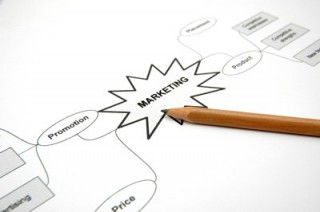
AIDA is an acronym that stands for:
- Attention (or Awareness)
- Interest
- Desire
- Action
Let’s have a look at each one, and see how it applies to internet marketing.
1. Attention (Awareness)
Getting the attention of your potential customers can be done in several ways online. One is through SEO, or Search Engine Optimization. This is a process, usually executed by an SEO firm, where content is created and optimized to help your website reach the top 10 (preferably top 3 results) on major search engines like Google. There is a systematic approach these experts can use to make that happen for you, and it truly works when applied properly.
Another way to garner attention is to run advertisements. PPC ads get you immediate attention and help generate warm sales leads. Running pay Per Impression (PPM) and having a presence on social media networks including professional networks like LinkedIn and social networks like facebook, YouTube, Google+, and Twitter speak more to the term “Awareness,” but also relate to Attention. Generally, these steps help you to build and maintain Top of Mind Awareness (TOMA) and are usually considered forms of branding.
2. Interest
How do you create interest in your products and services online? One way is to ensure that your images and multimedia are eye-catching and capable of keeping the attention going. If interest is not generated within the first few sentences, or the first few seconds, of any content you place online, you are doing a disservice to yourself, and your Bounce Rate (BR) will reflect it.
Interest is fueled by presenting a common problem or need and the associated emotions that go along with it. If your audience identifies with what you communicate, you will have a follower. This could be a twitter follower, someone who “Likes” your company’s Facebook page, one who frequents your website, or one who subscribes to your blog or YouTube profile.
3. Desire
Now that you have the online attention and interest of internet users, how do you bolster an intense desire for your particular products or services? This is where communicating benefits becomes quintessential. Emotion-based marketing and benefit-driven marketing are closely related. Truly, they are both emotionally related.
The initial emotion is past or present tense, a feeling of identification, introduced by bringing to mind a memory of a need or problem. This makes the end user feel that understand what they are going through, and gets them on your side.
Benefits are emotions based in the future tense, introduced by inspiring the individual to envision an improved version of their life approaching, as a result of a need being met or problem being removed. By quickly and clearly eliciting these emotions, you are generating a strong desire for your offerings – especially if you make the connection between that future vision with your products or services.
4. Action
Finally, you must cause your visitors to take action. That includes things like clicking links, downloading a free e-book, subscribing, making a purchase, or making a connection on a social network. Most people won’t automatically follow or “Like” your company online, and most of them won’t buy from you just because you have something that you have convinced them they want or need it. You must do more.
First of all, action is known as “call to action,” meaning that you enunciate the action you want your visitors to take and place that proposition plainly in front of them (without being annoying of course—please do not use pop-up windows!).
Use bolded headings, graphics, colors, headings, and other attention-getting elements to announce your call to action. And with your call to action, make sure the question “what do I get?” is answered. That is, you should always blend brief benefit verbiage in with your call to action, whenever possible, even if you have already stated your benefits ad nauseam.
Jared Pomranky


Leave a Reply: